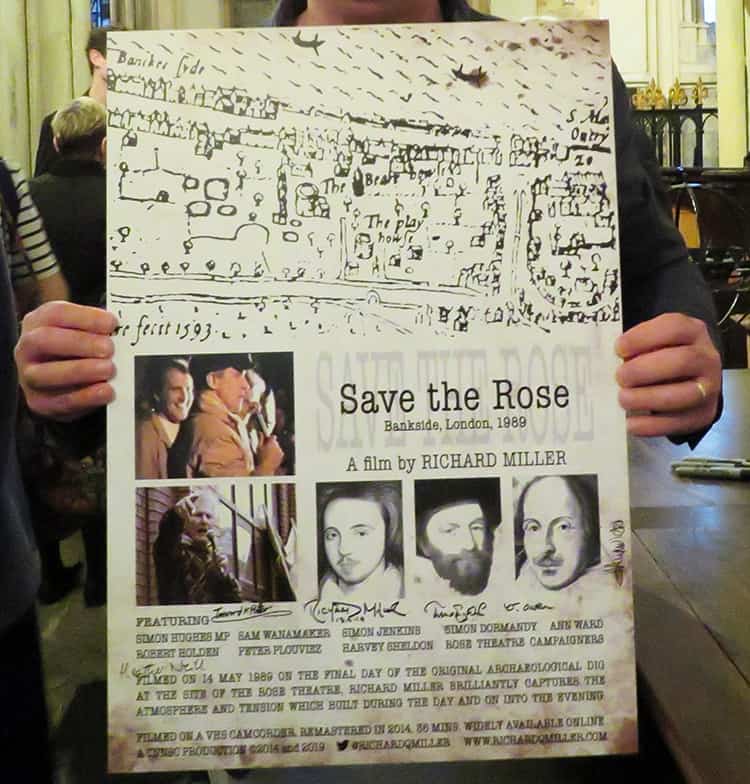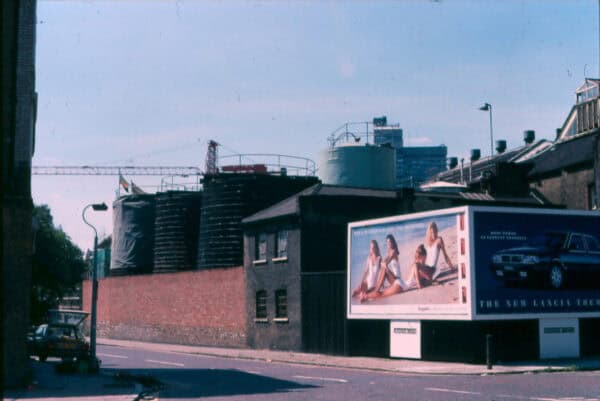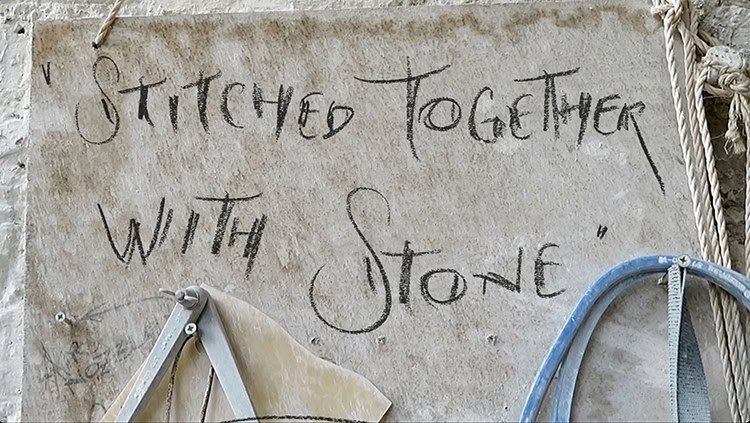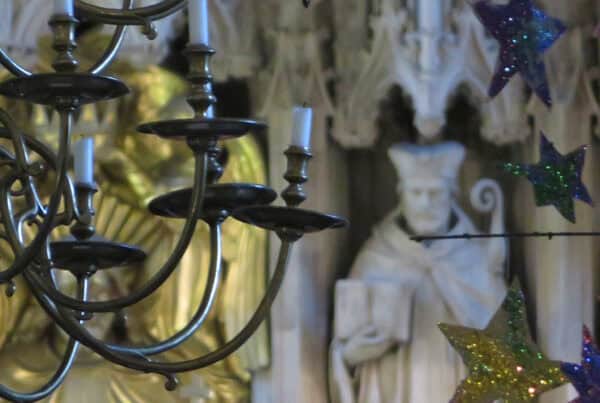Save the Rose
14th May 1989, Park Street, Bankside, London
a film by Richard Miller
Save the Rose 36 mins
If you were to cycle down Park Street, Southwark, you’d be forgiven if you didn’t notice the exhibition entrance to the Rose Playhouse. Squashed beneath a faceless office block built in 1990, there are few windows at street level, which, in any event, are blackened out, concealing the magical remains hidden inside.
The doors are usually open on a Saturday when regular talks are provided during the day, and visitors can see the archaeological site close up. The Rose also puts on a range of theatrical performances on the small stage and holds special events on other dates. The Rose Theatre Trust, guardians of the Rose, have a new archaeological dig scheduled for 2014, exploring the remaining third of the Elizabethan stage. Further plans are in place to improve the exhibition space and to build a new stage which would sit over the imprint of the original one. A redesign of the basement walls will, at last, let natural light into space, allowing the Rose to reveal its secrets to the outside world.
A quarter of a century ago, when the site of the Rose Theatre was uncovered during an archaeological dig at Bankside in 1989, the discovery captured the world’s attention. Hundreds of people descended on Park Street to catch sight of the remains as a team from the Museum of London fought a race against time to reveal and record as much as possible before property developers IMRY Merchant was due to start work on a new office block.
At the time, I was living just off Bermondsey Street. I had a keen interest in Elizabethan London and in archaeology generally, so I needed little persuasion to be an early and frequent visitor at the site, not least because my cycle route to work took me down Park Street if I so chose. As the story unfolded, it soon became clear that what little was remaining of the playhouse would not survive an argument with a bulldozer and the campaign to ‘Save the Rose’ was born. Benefitting from the support of many leading actors of the day, the campaign quickly gathered momentum and media interest from around the world, ensuring that the developers IMRY, English Heritage and the Thatcher government were kept on their toes.
The ongoing events were, however, met with bemusement by some local residents. Southwark, after all, had been in decline for many years. It is unlikely that many of the great or the good would have ventured further than the National Theatre or the Old Vic had it not been for the Rose – with the notable exception of Sam Wanamaker, that is. However, Philip Henlowe’s 16th-century Rose was no ordinary theatre, boasting a company of writers and stars, including Marlowe, Jonson, Kyd, Shakespeare, Edward Alleyn and others. These connections clearly helped to provide a powerful case for preserving the remains.
On Sunday, 14th May, with the dig on its final day, the Rose’s future was still unresolved, and the stage seemed destined to disappear once again beneath a towering office block. Morning turned into afternoon, and campaigners continued arriving, determined to put maximum pressure on all parties. It was apparent to many that this was going to be a day of great tension, and some campaigners were prepared to occupy the site to prevent developers from moving in.
I had decided the previous night to capture the day’s events, so I arrived early, armed with my relatively basic and cumbersome VHS camcorder. I shot as much footage as I could during the day, and at 6pm, I regrouped back in Bermondsey to feed myself and recharge my own batteries. I returned to Park Street at 11pm, by which time it was getting increasingly cold. The late-night show delivered real drama, and the stars, in my view, were those who stepped out from the crowd to vent their opinions. I lasted until 12.30am when the batteries on the camera ran out.
My original plan had been to edit the footage and to give one copy to Southwark Local Studies Library, one to the Rose Theatre Trust and to keep one copy for myself – the world wide web hadn’t been invented yet, don’t forget! However, without access to editing equipment, the video sat amongst others in a box, gathering dust for many years.
In 2012 I was clearing out a cupboard at home and rediscovered the box full of videos. I realised that I now had editing software on my home computer, which finally prompted me to complete the project. Save the Rose has an archival feel and was not shot using broadcast-quality equipment. The final edit was actually completed on Sunday, 12th May 2013, but I couldn’t resist waiting until the 14th May, exactly 24 years after that eventful day, to release the film.
In 2014 I was invited to screen the film and to give a talk at The Rose Playhouse on 10th February 2014. I re-edited and produced this shorter 36-minute version, especially for the screening.
Richard Miller 5th April 2014




